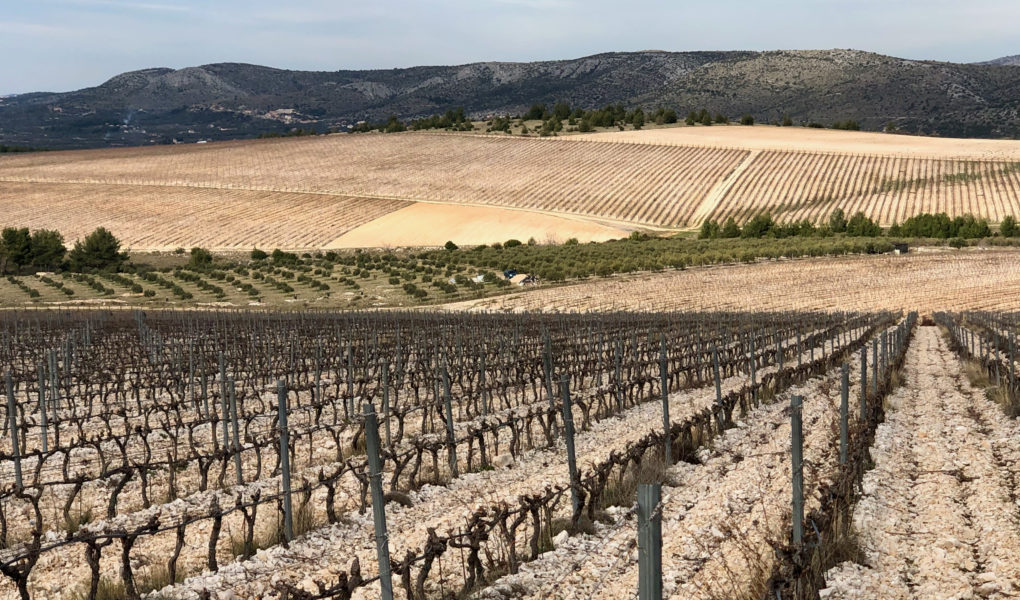This is the second in a series of 12 monthly articles following eight Croatian wineries through their year. Read the first article here.
February is the last of winter in the vineyard. In March, the earliest vine growth will begin, and with it the long season of hard work. Priorities now are to finish pruning and prepare the vineyards for new growth. In addition to caring for the established vines, all four wineries in this month’s report are preparing to plant a new vineyard either this year or next. In the winery, preparations are underway for bottling the fresh wines of 2020, while aged wines continue to rest on their lees or in barrels.
Testament
Region: Northern Dalmatia
Certified organic
50 hectares of vineyards
1 vineyard site
200,000 bottles/year
Grapes grown: Pošip, Debit, Maraština; Babić, Plavac Mali, Tribidrag (Crljenak), Lasina
Juraj Sladić stands in the late-January sun at the highest point of the Testament vineyards, where he is winemaker and manager. The vines march in rows down the hill, some neatly pruned and others still hairy with last year’s canes and shoots. Sladić points out Šibenik to the north, its bridge spanning the waterway in the distance. Across the valley different grape varieties stripe the land, interspersed with patches of creamy white stone soil waiting to be planted.
It is almost unknown in Dalmatia to have a single, large vineyard plot like this one. Due to the complexities of Dalmatian land ownership, most farmers have a number of separate small plots scattered around their winery. Testament’s single 50-hectare plot was once a military installation. Now, having all the vineyards together makes it easier to farm organically—there are fewer neighbors whose activities might impact the vines.
Testament’s remarkable vineyard soil plays its own part in the success of winegrowing here. Karst is the name of the stone that underlies these hills. It makes up the mountains that form the spine of Dalmatia, and seems to grow from the earth in the foothills. Testament’s topsoil was made by machine-grinding the stone near the surface into manageable pieces.
“[Because of] that surface layer of stone, in spring and summertime you have less evaporation of moisture, so it preserves moisture for the roots,” says Sladić. “That’s one effect. A second effect, you have less weeds growing because of the stones. The third effect is in the preharvest stage, you have some reflection [of light off the stones], so you get better photosynthesis, better production of sugar [in the fruit].”
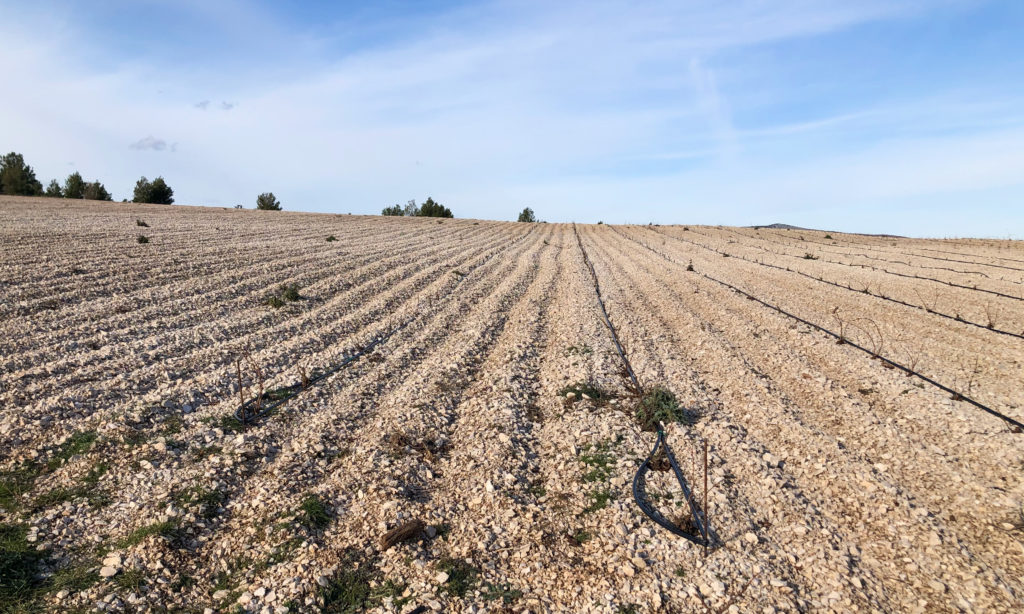
On one rounded hillside, one-year-old vines of the black variety Lasina are now established in the stone. They are still so small it would be difficult to see them if not for the snaking irrigation line that will give these babies a few drops of moisture in the harsh summer months.
An adjacent, empty plot of neatly combed white karst waits for another planting of Lasina this month. The planting is done by a machine that makes a hole, inserts the vine stock, and then closes the hole. The machine has lasers and GPS to help make straight rows. “It would be expensive and long term work to do it by hand,” Sladić says.
In the winery, the young wines of 2020 have just been “racked”—pumped off the yeasts at the bottom of the fermentation tank and into a clean tank, where they will settle further and wait for bottling. Sladić is watching over four wines that will be released for the first time later this year: 2017 Plavac Mali, 2018 Tribidrag, a macerated Pošip and a prošek of Babić, both from 2018. These will make up a new “premium” price category for the winery.
Benvenuti
Region: Western Istria
12 hectares of vineyards + 8 rented
About 20 vineyard sites
100,000 bottles/year
Grapes grown: Malvasia, Muskat Blanc, Ulovina; Teran, Merlot, Nebbiolo, Tempranillo
Benvenuti’s vineyards follow the more traditional pattern in Croatia’s coastal regions. “We are in a part of Istria where it’s very hilly and there are many small plots. The biggest we have in one piece is 5 hectares,” says Nikola Benvenuti, who runs the winery with his brother Albert. The rest are tucked into the Istrian hills on 19 more plots around the medieval hilltown of Motovun and the tiny village of Kaldir, where the winery is located. Malvasia and Teran, the primary white and black grapes of this region, make up 90 percent of their plantings.
This month, the vineyard team is preparing a 1.5-hectare plot of land for planting. “It’s a piece of land where there was a vineyard in the past, but now it’s been more than 25 years,” says Benvenuti. The vineyard is across the valley behind the Roxanich Hotel, which sits on the site of the cooperative winery that worked all the vineyards around Motovun under the Yugoslav farming system.
“So what we have to plant, it was an old vineyard of this [co-op] and now it’s more or less a small forest. We have to cut the forest, we have to work the land, and in March maybe plant some grass. We are just waiting for better weather,” Benvenuti says, laughing. “We have rain everyday.”
The grass they plant will help protect the land against erosion and contribute nutrients to the soil. Next spring they will plant Malvasia here.
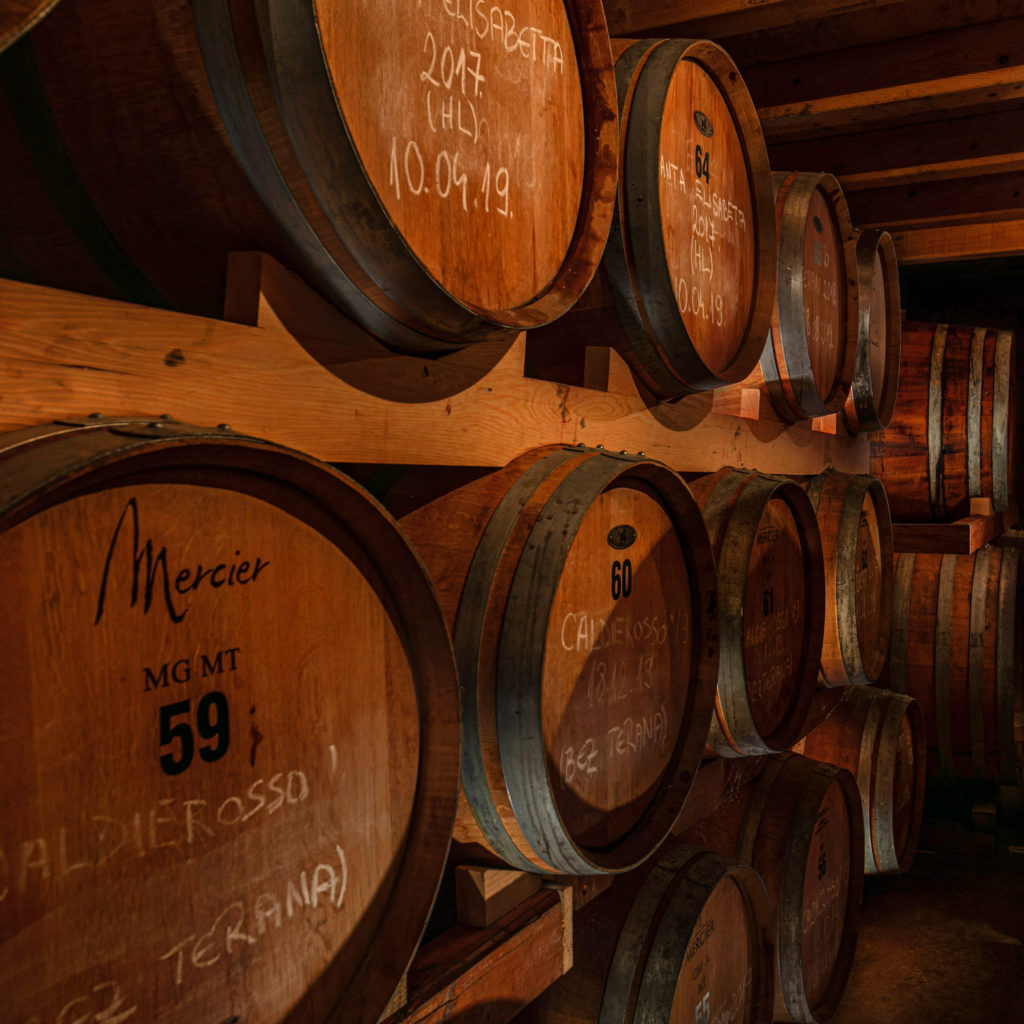
Like most wine makers in February, the Benvenutis are slowly preparing wines for bottling. Right now, Benvenuti says, “They are mostly wines that we aged for a period in our cellars.” One is the 2018 Teran, which has spent two years aging in oak barrels. In a month they will bottle it, then age it in the bottles for another year before releasing it to the market.
And then there are the four sweet wines Benvenuti has become known for. Normally, wine takes as little as two weeks to finish fermentation. But these wines made from dried grapes are still chugging along three months later.
“It’s a large amount of sugar in the juice, and the fermentation always goes very slowly,” Benvenuti explains. “Here we have a fermentation that takes, normally, six months, eight months, ten months, sometimes more. We are not pushing. We just leave it there and wait and taste and see how it develops.”
As the yeasts do their job, the sugars in the wine will slowly diminish. Eventually the yeasts will be exhausted and die, leaving substantial sugar in the wine, ideally balanced by acidity. But it is still far too soon to expect any sort of balance. Benvenuti laughs. “I tasted a few days ago and … it was so sweet!”
Vina Kos
Region: Prigorje-Bilogora
4 hectares of vineyards + 1.5 under contract
5 vineyard sites
25,000-30,000 bottles/year
Grapes grown: Kraljevina, Riesling, Chardonnay, Kerner; Pinot Noir
Karlo Kos has Kraljevina on his mind. He dashes from the cozy tasting room, with its wood fire, into the winery next door to dispense some of the 2020 Kraljevina from the tank. This new wine has vivid floral aromas compared to the 2019 version currently on sale, with its gentle honey and wildflower notes. With its fresh aromas, low alcohol and high acidity, the new wine is ideal to launch the spring season. At the end of the month, Kos will start the 2020 on the various stages of filtering and resting that lead to bottling.
The white grape Kraljevina is a specialty of Prigorje-Bilogora, northeast of Zagreb, and grows mostly in this region. In the past it was valued as a variety that would produce abundant fruit, resulting in a wine that was refreshing but basic.
Kos wants to diversify Kraljevina’s talents. Waiting in his cellar is a new, more serious version of Kraljevina wine from the 2018 vintage that he planned to release this year but will delay because of the Covid pandemic. For this wine, he says, “In the vineyard we reduced the yield; the whole production from harvest to crushing and pressing the grapes was different. We also macerated this wine.” This treatment is intended to make a full-flavored wine that will age for a few years instead of being consumed in the first year, as the fresh version is.
“We want to have more labels from Kraljevina, so we are also planning to do a sparkling wine of all Kraljevina.” Kos already made the base wine for this traditional-method sparkler. In the coming months he will bottle it with yeast and sugar to start the second fermentation, which produces bubbles in the bottles.
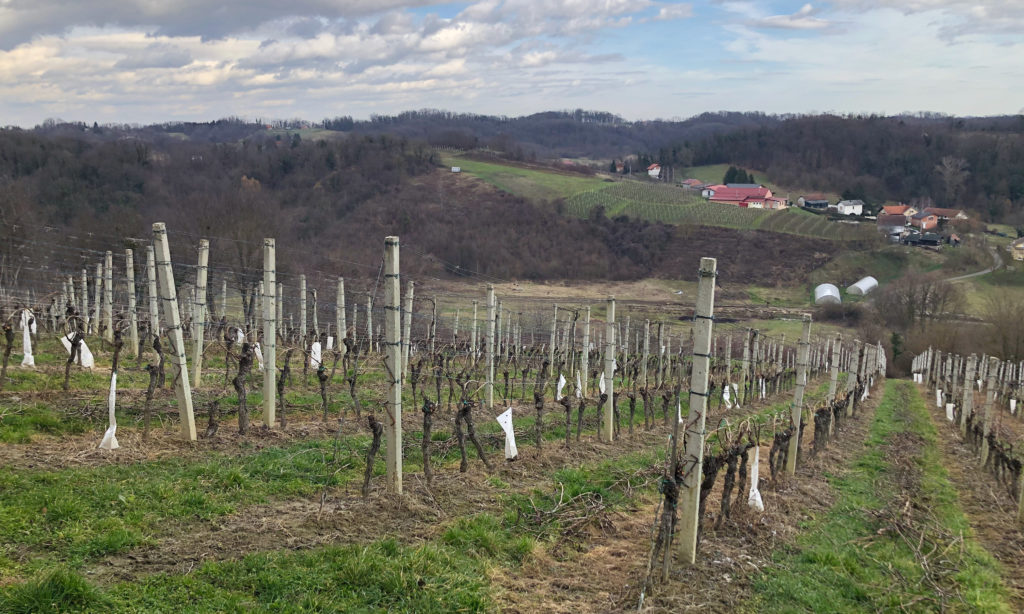
“Now the most work is in the vineyard, with the pruning,” Kos says. Just he and his father do the pruning because they want to give each vine personal attention. It is chilly, muddy work that they will finish in early March, with one low-lying vineyard of Kraljevina. By saving it for last, they hope it won’t be zapped by a late frost.
Galić
Region: Kutjevo/Slavonski Brod
66 hectares of vineyards
10 vineyard sites
Up to 333,333 bottles/year
Grapes grown: Graševina, Sauvignon Blanc, Chardonnay, Riesling, Muscadelle, Zelenac; Pinot Noir, Merlot, Cabernet Sauvignon, Cabernet Franc, Syrah, Carmenere
In Kutjevo, head wine maker Slaven Jeličić is preparing 2.5 hectares for planting with Pinot Noir, which he believes is ideal for this area. Last year, workers removed 40-year-old Pinot Noir vines from the site and cleaned up the plot. “We planted some special grass, some plants to recover the land a little bit,” he says. This month they will fertilize the plot, and then plant it in April.
In the established vineyards the team will soon finish pruning. Now the focus is on the vineyard supports. “Two or three people are walking through the vineyards and checking is there anything to fix, to change, remove. We have really strong winds here, and you always have some damage.”
The team is also looking out for damaged or dying vines. “Each year we lose a few percent of the vines and we need to replant.” This month they will order vine stock for replacement planting in April.
“We are now waiting for nice weather to start fertilizing. We analyze each plot, and then precisely decide what we need: magnesium, phosphorus, calcium, nitrogen, or microelements. We are really precise, to give to the land exactly the amount it needs. We want everything to be in balance.” Jeličić is talking about granular fertilizer that is spread with a tractor, but they also use organic cow manure.
“We have for three years now these Scottish mountain cows, special cute small cows … they have long hair and are really calm and not aggressive. For three years we are collecting the fertilizer from them, and now it is ready. This vintage we are proud that we are using 100 percent of this natural product of our animals.”
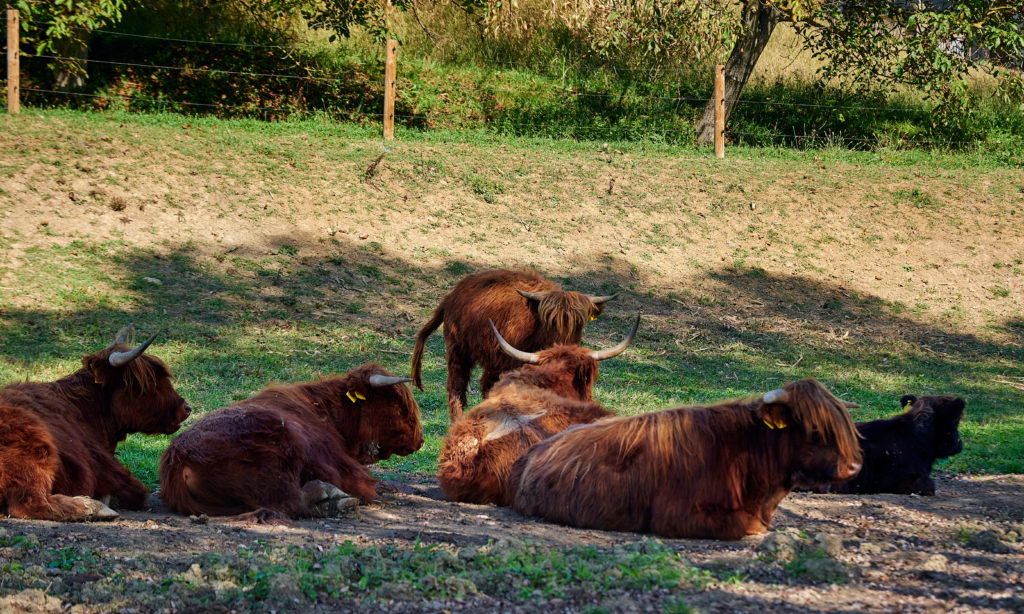
The cattle live at another Galić farm and vineyard in Brodski Stupnik, about 30 kilometers south of Kutjevo. Now there are also three animals in Kutjevo, which will start a second herd there.
With about 18 different wines, there is always something happening in the winery. “We have a plan every week what to do,” Jelačić says. “For example, today we have a rough filtration of the Crno 9 [a Bordeaux blend] and at the same time we are also filtering Sauvignon Blanc, the young one, 2020.”
Even in a large winery, activities such as bottling need to be measured according to available space. Early in February the winery team had a blind tasting to assess which lots of Graševina deserved to go into the premium version. Storing those 23,000 liters in small tanks of up to 5,000 liters allows the winery to bottle as needed. “Since the restaurants are still closed, we don’t bottle so quickly and in big amounts like we used to, so we just prepare … a few thousand bottles.”
[Cover photo: A patchwork of vineyard plots at Testament Winery (Staff/CCM)]

